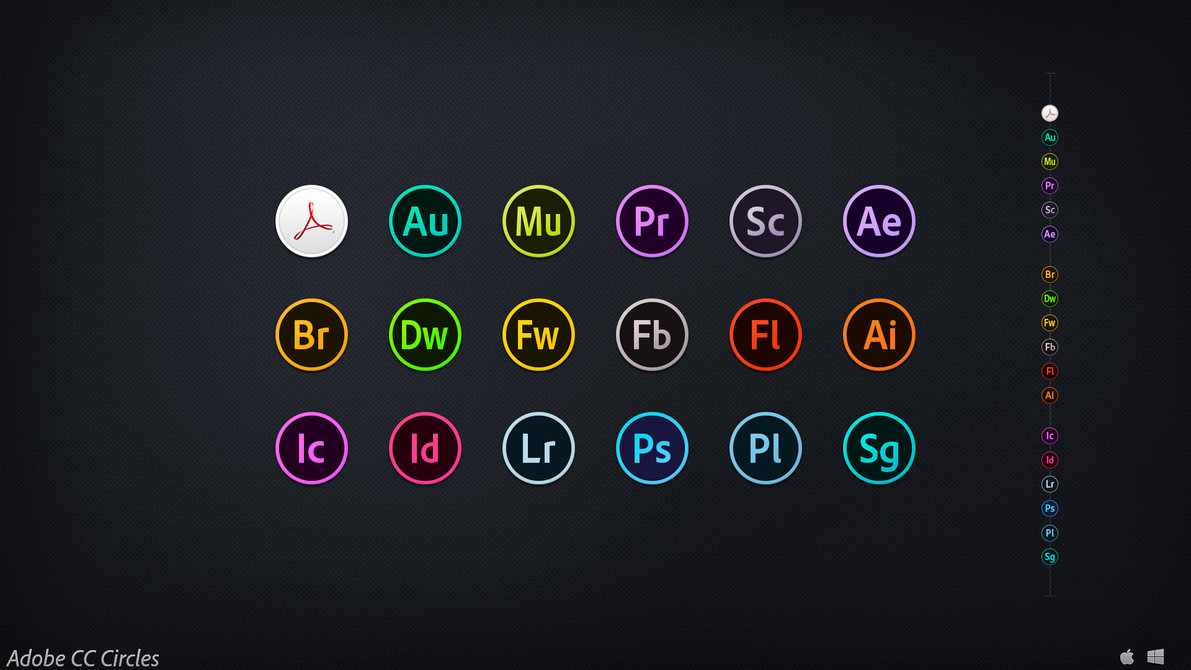Adobe products have been synonymous with creative media for many years now and many of you will have begun your Adobe journey with the Creative Suite. The sixth incarnation of the latter was of course the final instalment of the highly revered and successful software where you would buy the software as a disc or download for a fairly hefty sum.
What Happened Next…?
Well, let’s first take a look at what happened almost simultaneously.
Being one of the most successful purveyors of boxed software, Adobe’s CS6 was of course met with as much excitement and critical acclaim as all of its predecessors. However, perhaps sensing the seismic shift that would take place over the coming years in how professionals, businesses and individuals will access their files and applications, Adobe experimented with a subscription service, which it called Creative Cloud.
For just $50 a month, subscribers could gain access to the full range of Adobe programmes – Photoshop, Illustrator, InDesign, Premier Pro, etc. – plus additional online services. This new sales model evidently proved to be a success for the software company, for just one year after the release of Creative Cloud, Adobe announced that it would no longer be selling the Creative Suite software line, instead making Creative Cloud the only way that users could get their hands on any new versions of its software.
“We have no current plans to release another perpetual release of the CS tools and suites. Creative Cloud is going to be our sole focus moving forward,” said Scott Morris, senior director of product marketing for Creative Cloud back in 2013.
“We expected it to be a couple years before this happened. But we were surprised by how successful Creative Cloud has been. We know that’s going to be a difficult transition for some customers, but we think it’s going to be the best move in the long haul.”
Indeed, there are still no signs of a U-turn being made on this promise.
Why Creative Cloud?
From Adobe System’s perspective, the shift was almost certainly a business move, plain and simple. For instance, I would have had to upgrade my Creative Suite 6 at least once or twice before now if I hadn’t moved into the Creative Cloud. And, trying to find a spare £800, £900 or £1,000+ every one or two years is a big ask. I mean, it’s not like users start saving up for the next generation of software or even hardware as soon as they’ve purchased the latest.
But with Creative Cloud, that’s essentially what you’re doing. You’re paying a monthly fee for the latest and greatest Adobe software, which will automatically update to the newest most powerful version whenever it becomes available.
It’s a smart move for Adobe (and indeed other companies that have moved to the subscription model), but it’s also a smart move for users, for there are many benefits that come with the cloud version that you just simply didn’t get with Creative Suite. And so, without further ado, here are the top 3 reasons for why subscribing to Adobe Creative Cloud is a smart idea.
3 Reasons To Subscribe To Adobe Creative Cloud
#1. A Lower Barrier to Entry
It’s no secret that Adobe makes the best visual creation tools available. But they have always come at a cost. You might still find yourself stranded on CS6, refusing to now start to purchase a subscription to upgrade what you already have. And indeed, that is somewhat of a sticking point.
However, generally speaking, if you’re brand new to Adobe, then the Creative Cloud has made things a lot more accessible. Rather than having to fork out the best part of a grand and a half to get going, you can access the full Adobe suite for just £45.73 a month, which certainly feels like less of a commitment.
Lower and higher-level options are available as well, and so I direct you to the packages page, from which the screenshot below was taken.
#2. Updates, Updates, Updates!!
The cloud has revolutionised the user experience for software. In days gone by, with each new generation of a software programme or suite that came out – Adobe’s offerings included – the programmers had to go through an enormous list of changes and updates and implemented as many as they could before the cut-off date when the new product would be released for sale. Anything that didn’t get finished on time would have to wait until next year.
But with the cloud – and indeed with Creative Cloud – all software updates are implemented as and when they’re finished, including bug fixes, security patches, as well as extra tools, features, and general improvements to the whole release.
It means the programmers who make the software are less confined by the constraints of building a giant, monolithic release. When a new feature is finished, it can be added in an update distributed online immediately, instead of gathering dust for a year or two awaiting the next major release. Adobe Creative Cloud is now a continuously updated project.
#3. Storage And Integration
Of course, one of the greatest benefits of any cloud-based system is found in the fact that all files are stored externally, which in effect means that they are a lot safer than if they were only stored locally on your home computer.
Furthermore, Creative Cloud means that you’re not just confined to one device to work on your files. Using your Touch Apps on your smartphone or Tablet, you are able to edit your Adobe documents via logging into your Creative Cloud account, and then open it again on whatever device you happen to be sat in front of at a later date. And if you go for the All Apps package, then you will be able to use the whole collections of more than 20 creative desktop and mobile apps that will be synced across all of your devices.
Would you like to learn how to use the Adobe Creative Cloud Software? Why not have a look at our upcoming Adobe Training Courses.
What are your favourite features of Creative Cloud? Or perhaps you miss Creative Suite updates? Let us know in the comments below.

 Click here to see all of our Software Training Courses
Click here to see all of our Software Training Courses




One thought on “3 Reasons To Subscribe To Adobe Creative Cloud”